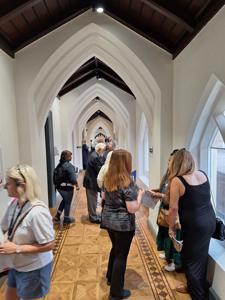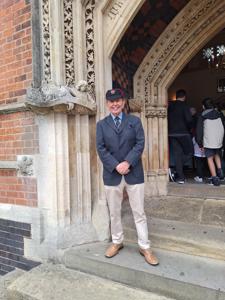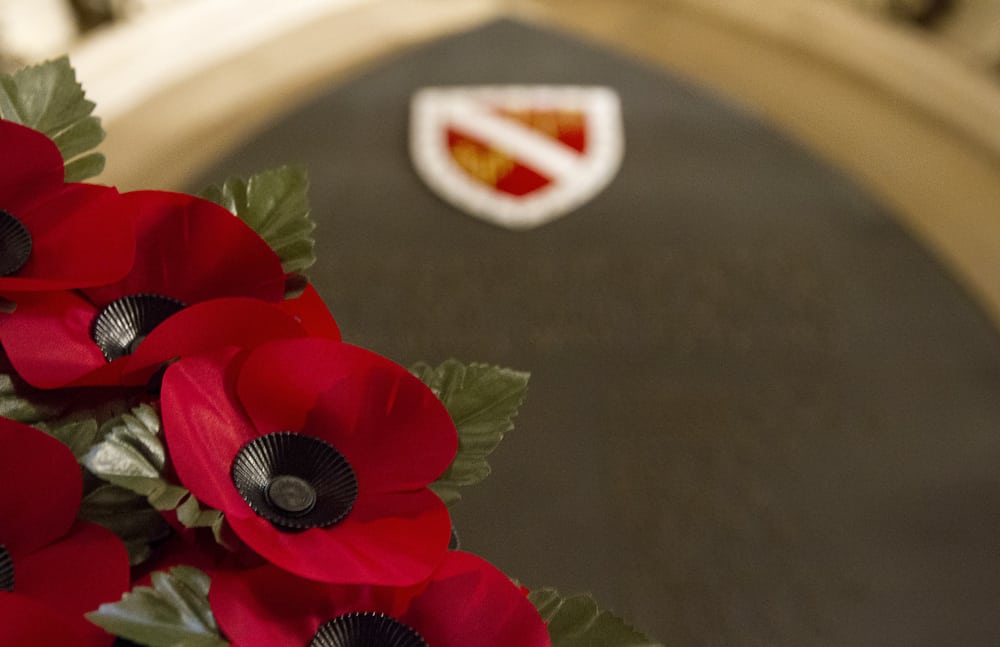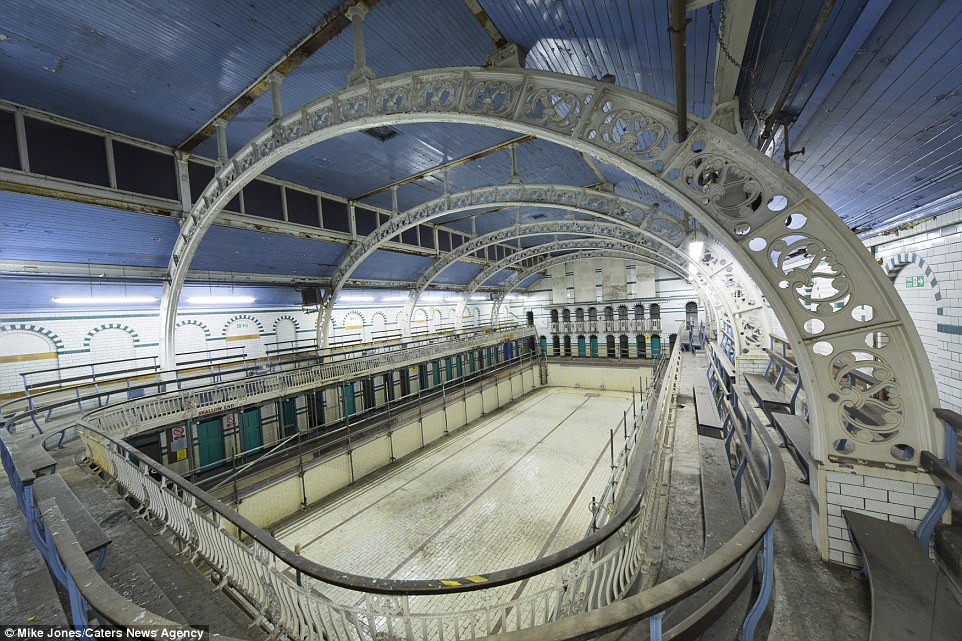Moseley Celebrates its Centenary
A Day To Remember
Ernest Robinson retired in 1956 leaving a legacy that endures to this day. On 16th September 2023 over 1000 former pupils and staff together with current students and staff came together to celebrate Moseley's first one hundred years.
Check out the great photographs of the day on Moseley Schools Facebook page.
Moseley Secondary School, the forerunner to Moseley School and Sixth Form, opened it’s doors for the first time on 11th September 1923 with Major Ernest H. Robinson as headteacher at a starting salary of £650pa.
Having only been acquired earlier that year the building was, not surprisingly, far from ready and on the first morning, 'hardly any preparations had been made. Most of the rooms were bare and thick with dust, and those in the tower were in an unbelievable state, having been used by generations of pigeons and crows as nesting places.'
One of the original masters recalled 'our first staff meeting in a room with an empty packing-case for our only furniture, and an inch and a half of black fluffy dust on the floor. On that first day there were no pens, paper, ink and books on the desks for the pupils.' A handbell summoned 99 boys in from the school field - or rather from the trees which they had been climbing - and they were greeted in the library before being sent home for three weeks while the staff did their best to get part of the building ready.
The school which was built and shaped under Mr Robinson - established an impressive record of achievement and a fine reputation in the city of Birmingham. Mr Robinson, perhaps selected for the organisational and personal skills he had demonstrated so effectively in his war service - proved to be a fine leader. He was resilient, calm, cheerful and unfailingly courteous. A good listener with a formidable memory, he stored away details about all his boys and staff so that he could always greet them in a friendly fashion. He believed strongly in teamwork, co-operation and loyalty, and his discretion and absence of favoritism were said to have imbued the whole staff with a sense of security.
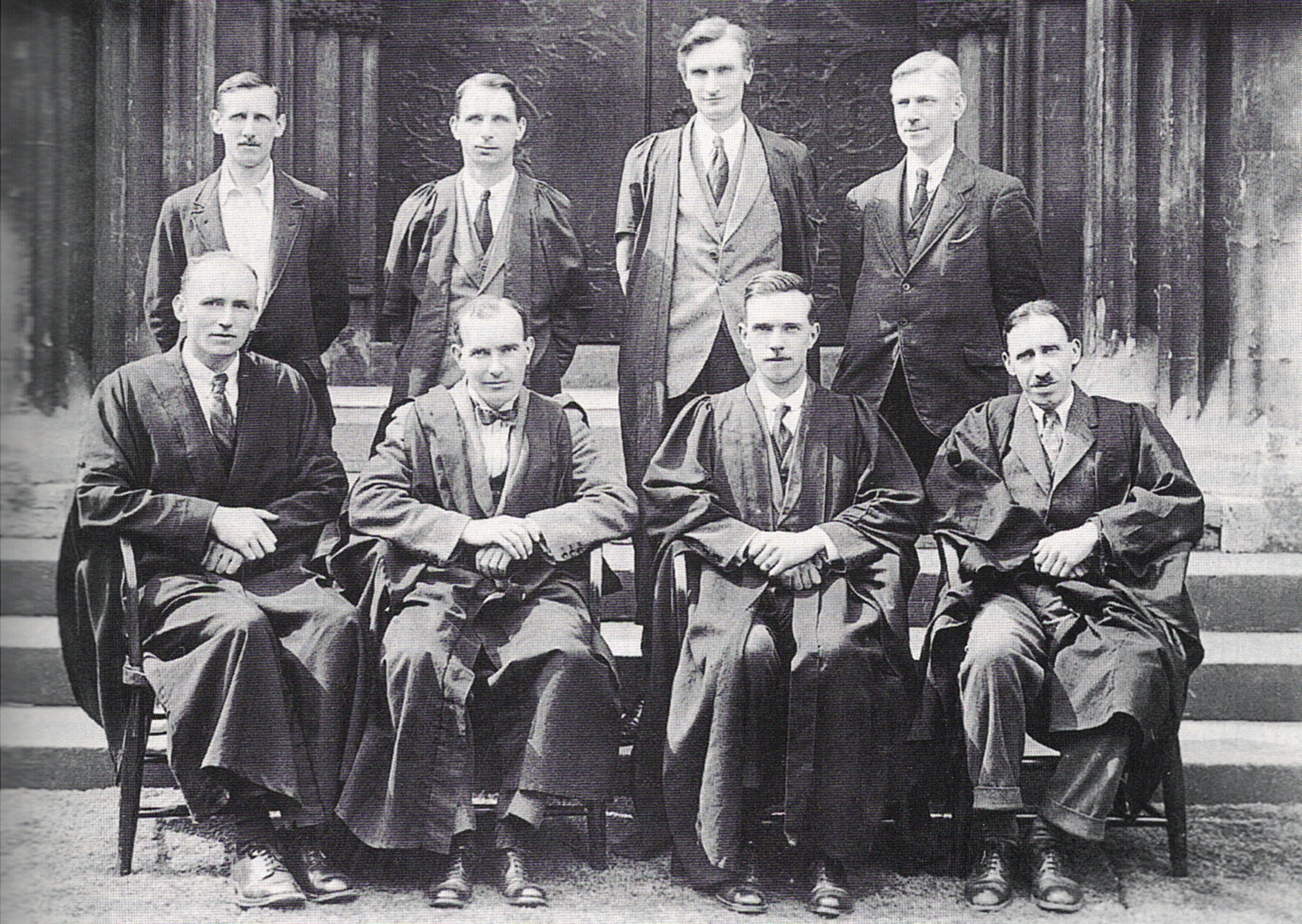
The original staff appointed in 1923
Back row left to right: Messrs Gillespie, Hill, Brampton, Jones
Front row left to right: Messrs Hughes, Robinson, Midgley, Andrews
A message from Bev Bevan
Moseley School and Sixth Form
Centenary Souvenir 1923 - 2023
SPECIAL OFFER £5 (Was £10.95)
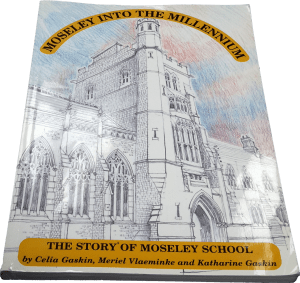 This book tells the story of a remarkable school, its various buildings and the people who lived and worked in them. It charts the social and educational changes which have taken place and the survival of piece of architectural history.
This book tells the story of a remarkable school, its various buildings and the people who lived and worked in them. It charts the social and educational changes which have taken place and the survival of piece of architectural history.
The story began in the 1850s when a family of Nonconformists acquired a site in rural Wake Green Road for the expansion of their training college for ministers. The present Moseley School, beginning in 1900 as College Road Board School (now Springfield Primary School), brings together different educational traditions as a result of: providing schooling for children whose families were moving out of the overcrowded city centre; the converting of nearby Spring Hill College into Moseley Secondary (later Grammar) School (1923); the opening of Moseley Modern School which replaced the senior school at College Road (1955). Through the bitterly fought debates of the 1970s, Moseley Modern School and Moseley Grammar School amalgamated.
Gradually the barriers came down and the school began to develop as a successful comprehensive. But the deterioration of the Victorian building became evident and led to its gradual closure during the 1990's. However, it was saved from demolition by being given listed status.
The Moseleians Gazette is a twice yearly magazine sent FREE to association members and contains a mixture of anecdotes from the past, articles and letters from former staff and students, reunion and event details together with a healthy balance of information regarding what's going on now at Moseley School. Back issues of the magazine are available to download from the members area.
The life blood of the Gazette is of course, your articles, so please, get your thinking cap on and submit an article to gazette@moseleians.co.uk. We are eager to hear from former pupils and staff and always on the lookout for a good story.
Regular features of the Gazette include:
Letters, membership information, events, reunions, what's happening now, Moseley made / where are they now, archive matters, stories and articles from current and former students and staff, history, photo's, obituaries, memorabilia, and much more.
The 'Moseleian' was the original magazine of Moseley and the archives contain a full record of these. The Gazette in its present form was first issued in February 1996, shortly after the rebirth of the Moseleians Association the previous year and back issues are available to view in the members area.
Gazette Copy Deadlines
Spring edition - March 1st
Autumn edition - September 1st
For distribution 4/5 weeks later
We are always delighted to receive contributions to our magazine. As a guide articles should always include a high quality image and be the following length...
Letter and News up to 250 words
Where Are They Now 250 to 300 words
Quarter Page 200 to 299 words
Half Page 300 to 399 words
Full Page 400 to 800 words
In August 17 members and friends took on the mammoth challenge of moving the association's school archive from the tower to it new ground floor home.
This was no mean feat as every item, including shelving units which needed to be dismantled and reasembled the other end, had to be man-handled by a chain gang down the winding tower stairs to staging areas. In the first instance to the second floor tower room, then down a further winding staircase to the first floor tower room, then down each flight of stairs in turn to the ground floor before being loaded onto parcel trucks or man handled along corridors to be stacked outside the new archive room ready to be sorted.
The process took around 6 hours that 102 man-hours!
We are indebted to members - Gerry Thompson, Joan Cooper, Dave Thomas, Paul Smith, Robin Stait, John Dyer, Mike Parker, and Mark Stephens who were joined by Sophia Green, Shannon Killarney, Wendy Weston and committee members Richard Cobb, Gaye Key, David Binnie, Roger Green, Steve George and Barry Phillips.
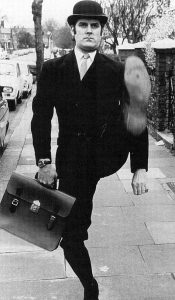 Surprisingly, there is a strong connection between Cleese and Moseley! In the 50's, “The Goon Show” on steam radio was eagerly awaited each week, indeed, a famous Chemistry Master (Neddy Bacon) was affectionately nicknamed after Harry “Neddy” Seagoon, a famous goon.
Surprisingly, there is a strong connection between Cleese and Moseley! In the 50's, “The Goon Show” on steam radio was eagerly awaited each week, indeed, a famous Chemistry Master (Neddy Bacon) was affectionately nicknamed after Harry “Neddy” Seagoon, a famous goon.
New comedies unfolded in the 60's: Beyond the Fringe, TWTWTW, Monty Python, The Goodies and many more became huge successes via the TV. But where is this Moseley Grammar School connection?
We need to travel to Somerset where John Cleese came from a family originally called Cheese but this was “Caerphilly” changed to Cleese! He went to St Peter's School at Weston-super-Mare in 1949 and eventually went on to become (and still is, I add) a leading comedian. He was taught by a man who later appeared at MGS the Rev Dolman for classics. How do I know? Imagine my recent shock when reading Cleese's autobiography “So, Anyway …” when I instantly recognised the Rev A H Dolman's face on p152. Cleese remembers him so accurately in his book:
Over the years we have seen many stories about the extra-mural interests of teachers and former teachers and now we report the massively enthusiastic responses to the revelation that a former staff member left Moseley School to become a professional engine driver.
Just how far Roger Norfolk’s passion has taken him came to light in a BBC4 documentary, when the cameras followed his dream ambition as he drove Flying Scotsman in its “comeback” tour on the Severn Valley Railway.
This led the Moseleian Gazette to research more of the former science master’s activities after he switched careers in 1991, putting behind him 24 years in teaching which began at Moseley Modern. It seems his focus for railways dates from his 1950s boyhood in Hertfordshire and by 1968, his family having moved to the Midlands, he was devoting spare hours outside of teaching as a volunteer, helping develop the SVR heritage line, including rebuilding scrapped steam locomotives.
Soon he was on the footplate as fireman and by 1984 was a week-end driver before returning to the physics labs on Monday mornings. Moseleians Association webmaster and past chairman Roger Green is among former pupils whom Roger Norfolk took to SVR several times, to lend a hand in the restoration work but few expected he would give up the classroom in favour of trains.
Henry Gardiner, who came to Moseley Grammar School at the outbreak of the war in autumn 1939, died in September 2011. Soon after his death I discovered that four recordings of the "Levee Ramblers" on Tempo 78's had been re-released by two independent companies amongst a collection of early recordings of now famous bands. Former Moseleian Ray Nicholas, a friend of Henry's, had two and I the other two. We copied these four tracks which were recorded at Sheffield Jazz Club in 1949 on to a CD and these were sent to interested parties. Then suddenly, a chance telephone conversation with Jean Gardiner revealed the existence of a further eight 78's of Henry's music that had been left in a cupboard for many years. Upon inspection they were in a sorry state scratched and dented and without sleeves. The most interesting fact was that I discovered that some of these had been recorded in 1948 prior to the later Tempo 78's. Some were by Ray Foxley's Band but of the 16 tracks seven were by Henry's own band the "Tailgate Ramblers". In the band was his school friend Tony Gibbons and the well known Birmingham trumpeter Ken Ingram on cornet.
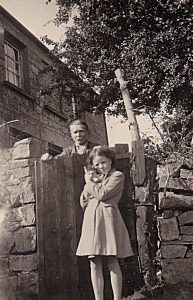
Just half a century after Moseley School took possession in 1968 of the remote stone cottage which was to become a centre for building pupils' character and initiative, a previously unknown part of its earlier history has been revealed.
For about 20 years until his death in 1958 the Old Grouse was home to retired pit worker George Davies, his wife Susannah and their daughter Phyllis and grand-daughter Thelma.
Thelma, adopted by Phyllis shortly after her birth in 1943, is the sole surviving resident of Old Grouse and recently came across the Moseleians website. And in it the story of how her one-time home became the school cottage.
After the cost of meeting planning requirements outstripped the means of the trustees who sold it on, Thelma Dieltjens emailed webmaster Roger Green to express her delight at finding the cottage had been restored from its 1960s dereliction and says she hopes, under new owners, it will stand for years to come.
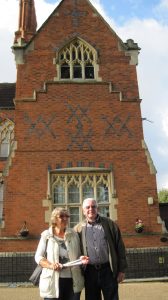 Heritage Open Day at Spring Hill College last September provided a vivid Down Memory Lane occasion especially for three visitors to the 1857 Spring Hill College building.
Heritage Open Day at Spring Hill College last September provided a vivid Down Memory Lane occasion especially for three visitors to the 1857 Spring Hill College building.
Margaret Yarnall, husband John and daughter Nicki was not on the official tour. It was the former caretaker's house specially opened for their private visit by head teacher Roger McBrien, at the east end of the college building and used for storage while awaiting improvement and restoration.
For Margaret lived there as a girl, daughter of long-service caretakers Les and Doris Brown, through her school years at College Road and Moseley Modern and courtship with John who was in the same class, until their marriage in 1965.
From the moment the key turned in the lock of the school corridor door to the house, the memories came flooding back for the couple and for Nicki who had visited, with brother Steve, while their grandparents continued in occupation until their retirement.
The staircases between the three floors, some of the wallpaper, the Victorian metal window frames in arched stone settings, the first floor bathroom put in for the family to improve on the old ground floor washroom, the four bedrooms, two of them occupied by her grandmothers.
“I remember sliding down the one set of stairs on a tin tray,” recalled Margaret, whose bedroom was on the top floor, “and dad somehow managed to get central heating extended into the house from the main school while the head's house remained heated only by open fires!”
 THE WAR MEMORIALS TRUST is the national charity dedicated to the protection and conservation of our war memorial heritage.
THE WAR MEMORIALS TRUST is the national charity dedicated to the protection and conservation of our war memorial heritage.
The Trust manages a website aiming to create the UK's most comprehensive understanding of war memorials to date. It is designed to be a system through which the public can upload information directly to the site.
Details of two war memorials related to Moseley School have recently been added to the website. These are the main War Memorial in the foyer to Spring Hill College and the old War Memorial from College Road School. The latter disappeared many years go although we have a poor photograph of it in our archive.
We would be very pleased to hear from anyone who last saw the College Road School memorial before it went missing.
First player ever to score more than 250 runs and take 25 wickets in a four-match Test series, a sporting hero of summer 2017 who was the first England spinner since 1930 to do so when he took a hat trick in the Third Test against South Africa. He went on to become Man of the Match and Man of Series in the final Test.
Moeen's interest and ability in cricket was stirred years before he arrived at Moseley School. Indeed by 1990, at age three, he was learning how to hold a bat and turn a ball over with his father and other siblings in the back garden of the family home in Sparkhill.
His dad even turned part of the garden over to a cricket net and installed a bowling machine. After arriving home from the local primary school he would go with brothers, cousins and friends to the nearby pitch in the park off Stoney Lane and at age nine announced a proper cricketer was all he wanted to be. Moeen began to realise his ambition during his years at Moseley and was to captain the school team in a period when the side was unbeaten.
 Chief Yeoman Warder of the Tower of London and former Moseley Modern School pupil Peter McGowran was the eldest of eight children living in Highgate, Birmingham in 1958. He started school at Chandos School before the family moved to Phipson Road, Sparkhill when he continued his junior years at St John’s before eventually joining Moseley Modern School in 1969. Peter takes up the story:
Chief Yeoman Warder of the Tower of London and former Moseley Modern School pupil Peter McGowran was the eldest of eight children living in Highgate, Birmingham in 1958. He started school at Chandos School before the family moved to Phipson Road, Sparkhill when he continued his junior years at St John’s before eventually joining Moseley Modern School in 1969. Peter takes up the story:
I would not change a thing: I enjoyed all the sport especially playing cricket and football for the school and taking part in the school performances that were laid on year after year, it was a blast. I believe that it is possibly due to the thespian in me that life eventually got me into the Tower of London as a Yeoman Warder (Beefeater).
Enlisting in the Royal Air Force Regiment in March 1975, I progressed through the ranks to become a flight sergeant, operating in many roles around the world; Hong Kong/Chinese border operations, Northern Ireland, Belize, many years in West Germany during the cold war, Cyprus and Gibraltar. I spent over 25 years in the RAF.
I joined the Body of Yeoman Warders at the Tower of London in August 2009, following a period working in the nuclear industry.
The Body consists of a total of 32 Yeoman Warders who all come from a military background, having completed a minimum of 22 years in the armed forces, achieved the minimum rank of sergeant major and have been awarde

Most ex-Moseley students from the Yardley Wood and Billesley area will well know or remember Billesley Common which remains today a major stretch of public recreation space in that part of South Birmingham. Billesley is an Anglo-Saxon place name meaning Bill's clearing, although it is not thought that anyone was called Bill in that period and the word probably originates from a 'beak' or 'bile' (sword) shaped mound or hill.
Today as well as having numerous sports pitches it is also home to Moseley Rugby Football Club who moved there to lease part of the common from Birmingham City Council for their pitches and clubhouse. Their ground has a seating capacity of around 5,000, with a new stand and clubhouse. There is also an Indoor Tennis Centre and Gym on the Common.
But turn back the clock to before World War 1 and it seems that Billesley Farm on the western edge of the Common along with the Yardley Wood side of the Common were both used as a civil airfield for early general aviation.
In 1911 the Birmingham Aero Club used Billesley Farm mainly at weekends where they flew a glider and several models. A contemporary account from a club member published in Flight describes how, in order to launch the glider, a wind of about 30 mph was required. A group of six very fit men reportedly then towed the glider running at 6 to 7mph in order to keep it airborne at a height of about 25 feet.
The airfield, which was never more than a grass surface, was not used for any military purposes during WW1, but in November 1919 what was then called Billesley aerodrome was listed as suitable for use by Avro 504Ks and similar aircraft.
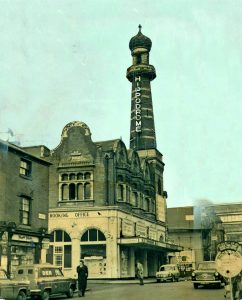 Gerald believes that his surname originated in 10th century France as D'Racey, although his family settled in the West Country in Elizabethan times and had spread to London, Wales and Gloucester by the 18th C. In 1806 a John Draisey, was a cordwainer or bootmaker in Gloucester.
Gerald believes that his surname originated in 10th century France as D'Racey, although his family settled in the West Country in Elizabethan times and had spread to London, Wales and Gloucester by the 18th C. In 1806 a John Draisey, was a cordwainer or bootmaker in Gloucester.
Two of John's grandsons, James and Henry, came to Birmingham in the 1850s and were apprenticed to a carriage lamp-maker, Beesley and Hyde in Severn Street, and lived in the Gas Street area of the city. But their father George Draisey, had by then become an alcoholic and abandoned his family, while their elder brother, George, had spent time in gaol for theft. Around the mid-Victorian period, and possibly because of the family history around that time, the family surname changed to Draysey.
As well as learning to be lamp makers, John and Henry Draysey, used to take the workers' bets to commission agents or bookies. They soon realised that they were taking more money in than paying money out, and in 1865 they set up their own bookies business in Holloway Head, where they became more and more successful. They decided to invest some of their money in building as Birmingham was expanding so much because of the Industrial Revolution and migration into the City from the countryside.
The two Draysey brothers built terraced houses notably those around Ombersley Road between Moseley Road and Ladypool Road, which became known as 'mugs row'. They later moved on to build the City Assembly Rooms in Hurst Street, on land leased from the City Council.
In 1899 the Draysey brothers built the Tower of Variety and Circus' behind the Assembly Rooms which opened in October of that year. But that was not successful and closed after just five weeks, and reopened in 1900 as the Tivoli Theatre, becoming the Hippodrome in 1903. That was also one of the first Bioscope Theatres in England before cinemas appeared in 1914.
Many will remember the Tower on the roof of the Hippodrome which is long gone, as the venue has undergone much remodelling over the decades until it is now one of the foremost theatres outside London staging musicals, ballet and opera as well as the annual pantomime.
 When those of a certain age gather, and the conversation turns to stuff we saw on telly when we were little – mentioning such classics as The Tomorrow People, Timeslip, and Ace of Wands (and insisting that Pertwee was much better than the silly chap with the scarf) – a nervous silence always falls, until somebody says, “Who remembers the one with the stones – the stones with eyes?”
When those of a certain age gather, and the conversation turns to stuff we saw on telly when we were little – mentioning such classics as The Tomorrow People, Timeslip, and Ace of Wands (and insisting that Pertwee was much better than the silly chap with the scarf) – a nervous silence always falls, until somebody says, “Who remembers the one with the stones – the stones with eyes?”
Its title, which most people seem to have blanked from memory, is Escape Into Night, broadcast by ATV in April and May of 1972 – a truly underpants-soiling, six-part weekly teatime serial that everyone who was a kid at the time still has at the back of all their recurring nightmares. And if online discussions of it are anything to go by, this is no mere hyperbole, but often quite literally the case. It kick-started a minor trend of setting children's TV fantasy amid spooky megaliths, such as Children of the Stones (1977), filmed at Avebury (creditable, but very tame by comparison), the Doctor Who story The Stones of Blood (1978), filmed at the Rollrights (silly chap with scarf), and Quatermass (1979) filmed at a fake Stonehenge (“Huffity, Puffity, Ringstone Round…”).
Yet Escape Into Night is not set at any ancient stone circle, but rather in the dreamscape world of its protagonist, Marianne, who, while poorly in bed for weeks on end, draws pictures in her colouring book that come to life as she sleeps. (Yes, this really is a case of, “…and then I woke up and it was all a dream.” Or is it?) There, she meets Mark, who can't walk, and is trapped in an empty house she has drawn. One night they argue, and in a fit of childish pique she draws eyes on standing stones surrounding the house, to keep Mark a prisoner, and from there the story unfolds.
Attempts to track the fate of a pipe organ which stood on what is now Moseley School's west wing library balcony have, until now, proved fruitless.
New evidence suggests that the organ, which was probably built when the building first opened in 1857, as a college to train non-conformist ministers, survived in situ until after the building became a school in 1923. Some Moseley Secondary School pupils, as the school was then known, recalled working the bellows. By 1938 it had fallen into disuse and no one can recall its fate. Some reports date the organ as 1866, nine years after the building first opened. However the shape of the balcony suggests it was designed with an organ in mind. Perhaps an earlier organ was brought from the college’s original home in Spring Hill, Hockey.
Recent research has now shed some light on the mystery. By 1938 the organ was described as “almost unrecognisable as a musical instrument”. With the involvement of Alderman Byng Kenrick, Chairman of the Education Committee, who was a cousin to Prime Minister Neville Chamberlain, it was offered to Rea Street Senior Boys' School in Deritend. However unable to afford the cost of removal and repair, the Rea Street staff took it upon themselves to have the old organ delivered by a lorry, and, with the help of their boys, restored it.
Mirsad Solaković was both a student and later a drama teacher at Moseley School arriving in Birmingham as a refuge from Bosnia aged thirteen in 1992.
This year Mirsad self-published a book telling his story and including some of his poetry based on his experiences of the Bosnian war which raged from 1992 to 1995. His book “The Boy Who Said Nothing” has become a bestseller and is a poetic account of the Bosnian and Herzegovinian tragedy from his own devastating childhood experiences of war in the former Yugoslavia to his views of hope and peace for the future as an adult. Mirsad describes the horrific crimes which occurred during the war as well as his own mental struggle. It is also an uplifting account of just how effective good teachers can be when faced with deeply troubled pupils.
Mirsad Solaković was born into a very successful family in Kozarac in Bosnia, and was only thirteen when war broke. His family were taken to a concentration camp set up in his own school where Mirsad was tortured and tormented by his Serbian schoolteacher. He witnessed many atrocities and lost close family members, and having survived these events, was left with psychological damage Having fled the camp, with his family he made the hazardous journey to the relative safety of Croatia, and then made the difficult decision to come to the UK as refugees.
Richard Callaghan: It was with trepidation that I entered the quad at Moseley Grammar School in September 1971. I served the full term and left in 1978, having survived the transition to Moseley School making some great friends of our sworn enemy “the Mods' who lived behind the air raid shelter.
Having kept in touch with a few of my old class mates, I met up with Martin Stevens in the summer of 2016 and was rather jealous to hear that he was about to retire! However on further interrogation it appeared that even at his tender age there was no plan B. 'How about us walking every Monday morning',I enquired....and so it started, Martin, my Border Terrier and I went for a short four mile walk around Barston ending with a swift pint before returning home.
Over the last year our group has expanded and we have been joined by Mike Webb, Ainsley Wallace, Shannon Killarney, two more dogs and a new friend, Mike, who had to pass a searching interview in order to join our elite circle.
Many Moseleians will have learnt to swim in Moseley Road Baths which, after many years of neglect, are threatened with closure. In July 2014 more than 100 swimmers highlighting the plight by posing as a ‘Terracotta Army’ in the empty Gala Pool in reaction to the news that Birmingham City Council intended to permanently close the historic building. However this June saw better news for the much loved Edwardian swimming pool when The Moseley Road Baths Coalition announced that Birmingham City Council has taken the decision to keep the Baths open for swimmers until the end of March 2018.
The recently formed Moseley Road Baths Coalition is made up of the Friends of Moseley Road Baths, Moseley Road Baths Action Group, Historic England, the National Trust and the World Monuments Fund. The coalition team has been working with Birmingham City Council to explore a sustainable future for the baths that includes swimming, for what is unquestionably one of Birmingham's most important heritage buildings and one of the nation's most significant swimming pools.
The decision to keep the building open for swimming gives the coalition, working together with Birmingham City Council, time to develop an alternative way of keeping the pool open, (either through transferred operations to a community interest company or via another operator), and to work on plans to bring all of the building back to life a complex task which will require significant investment, given the scale and complexity of the backlog of conservation and building work required.










